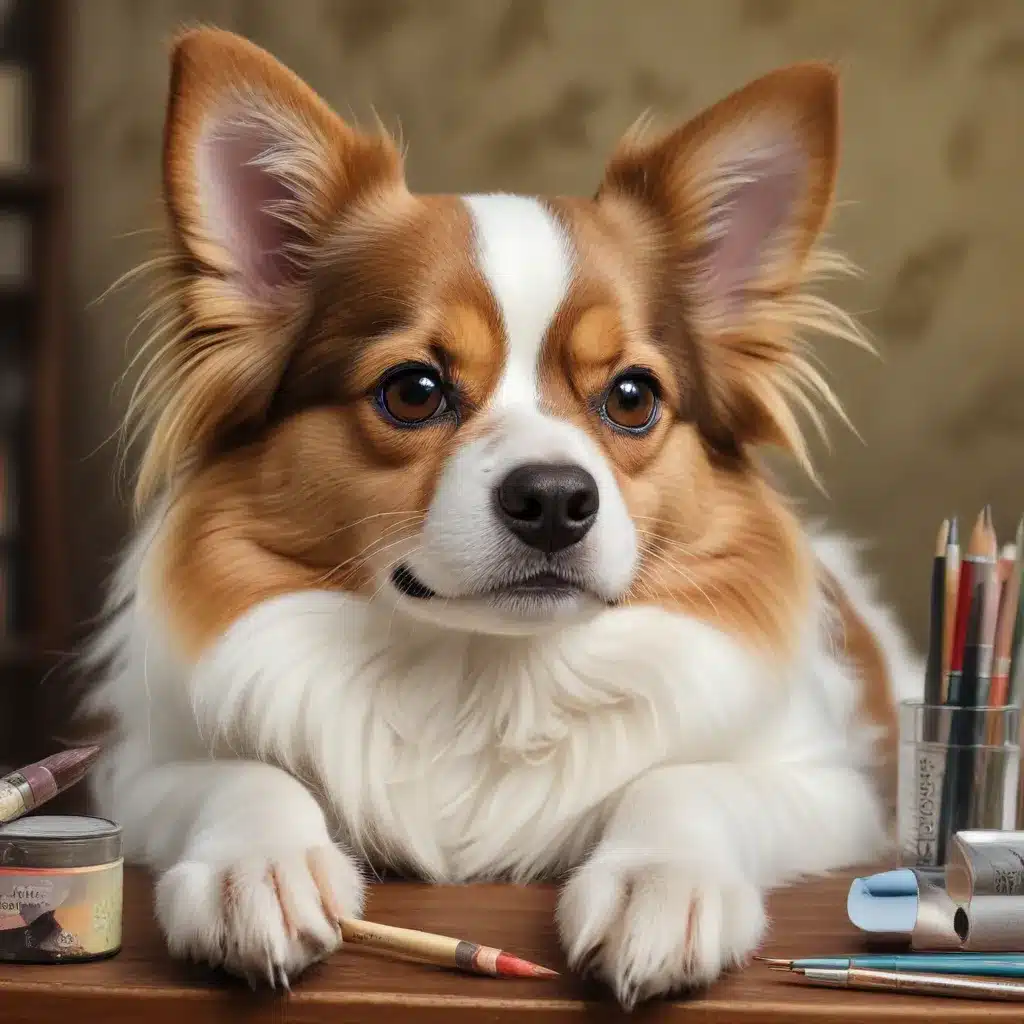
As a seasoned artist and educator, I’m thrilled to share my expertise on the essential art supplies and materials needed for creating captivating pet portraits. Whether you’re a budding artist or an experienced painter, understanding the right tools and techniques can make all the difference in bringing your furry subjects to life on the canvas.
Choosing the Right Drawing and Painting Surfaces
The foundation of any pet portrait begins with the surface you choose to work on. While personal preference and the desired medium play a role, consider the following options:
Canvas
Canvas is a classic choice for pet portraits, offering a durable and textured surface that can handle multiple layers of paint. When selecting a canvas, opt for a high-quality, primed surface that will allow your colors to blend seamlessly. The canvas texture can also add depth and character to your painting.
Paper
For those who prefer a more delicate, soft touch, quality drawing papers can be an excellent choice. Look for papers specifically designed for wet media, such as cold-pressed watercolor paper or smooth bristol boards. These surfaces can handle the demands of detailed pencil work, vibrant acrylics, or lush watercolor washes.
Stretched Canvas Boards
As a middle ground between canvas and paper, stretched canvas boards provide the sturdy support of canvas with the ease of a portable board. These are particularly useful for plein air painting or working on the go, as they are lightweight and easy to transport.
Essential Drawing Tools for Pet Portraits
Capturing the intricate details and expressive features of your furry subjects requires a well-stocked arsenal of drawing tools. Consider the following essentials:
Pencils
A range of pencil grades, from soft 6B to hard 2H, will allow you to achieve a variety of line weights and shading effects. Opt for high-quality graphite pencils that provide smooth, consistent marks.
Erasers
Having a variety of erasers, such as kneaded, vinyl, and battery-powered, will give you the flexibility to refine your drawings with precision. Kneaded erasers are especially useful for delicate adjustments and lifting graphite.
Blending Tools
Stumps, tortillons, and paper stumps can help you seamlessly blend and smooth your pencil work, creating soft, lifelike textures.
Sharpeners
Keep your pencils in peak condition with a quality pencil sharpener or artist-grade electric sharpener. This will ensure clean, precise lines throughout your drawing process.
Vibrant Painting Mediums for Pet Portraits
Whether you prefer the bold strokes of oils, the luminous washes of watercolors, or the versatility of acrylics, the right painting medium can make all the difference in capturing the essence of your furry subjects.
Oils
Oil paints offer a rich, creamy texture and extended drying time, allowing for seamless blending and layering. This medium is particularly well-suited for capturing the depth and texture of a pet’s fur.
Acrylics
Acrylics are a versatile choice, providing a wide range of opacities, from transparent to heavily pigmented. Their quick-drying nature makes them ideal for building up layers and achieving detailed, lively pet portraits.
Watercolors
The luminous, fluid nature of watercolors can beautifully capture the delicate details and soft edges of a pet’s features. With a bit of practice, watercolor painters can achieve stunning, vibrant results.
Palette Considerations for Pet Portraits
Choosing the right color palette is crucial for bringing your pet’s unique features to life. Consider the following tips:
Warm and Cool Tones
Incorporate a balance of warm and cool tones to create depth and dimension in your pet portraits. Warm hues, such as reds, oranges, and yellows, can highlight areas of light and warmth, while cool tones, like blues and greens, can add depth and shadows.
Neutral Shades
Neutral tones, such as grays, blacks, and browns, are essential for capturing the subtle nuances of a pet’s fur, eyes, and features. These colors can help ground your painting and provide a harmonious foundation.
Complementary Colors
Strategically using complementary colors, or those that sit opposite each other on the color wheel, can add vibrancy and visual interest to your pet portraits. For example, pairing cool blues with warm ochres or oranges can create a striking contrast.
Brushes and Blending Techniques
The right brushes and blending techniques can elevate your pet portraits, allowing you to capture the texture, movement, and personality of your furry subjects.
Brush Selection
Invest in a variety of brush shapes and sizes, including round, flat, and filbert brushes. This will give you the flexibility to tackle different areas of your painting with precision and control.
Blending Techniques
Experiment with various blending techniques, such as wet-on-wet, dry brushing, and glazing, to achieve the desired effects. Wet-on-wet can create soft, diffused edges, while dry brushing can add texture and movement to the fur.
Capturing the Essence of Your Subjects
As you embark on your pet portrait journey, remember to not only focus on the technical aspects but also on capturing the unique personality and essence of your furry subjects. Observe their expressions, mannerisms, and the special bond you share with them, and let that inspire your art.
For additional inspiration and a wealth of resources, be sure to explore the Pencil and Paint Muse blog. There, you’ll find a wealth of information, from step-by-step tutorials to color theory insights, all designed to help you create captivating pet portraits that truly shine.